Odontomachus coquereli
| Odontomachus coquereli | |
|---|---|

| |
| Scientific classification | |
| Kingdom: | Animalia |
| Phylum: | Arthropoda |
| Class: | Insecta |
| Order: | Hymenoptera |
| Family: | Formicidae |
| Subfamily: | Ponerinae |
| Tribe: | Ponerini |
| Genus: | Odontomachus |
| Species: | O. coquereli |
| Binomial name | |
| Odontomachus coquereli Roger, 1861 | |
| Synonyms | |
| |
| At a Glance | • Ergatoid queen |
A Madagascar endemic that forms small colonies of less than 50 workers.
Identification
The lone member of the Odontomachus coquereli group.
Keys including this Species
Distribution
Endemic to Madagascar.
Latitudinal Distribution Pattern
Latitudinal Range: -13.998° to -15.66666667°.
| North Temperate |
North Subtropical |
Tropical | South Subtropical |
South Temperate |
- Source: AntMaps
Distribution based on Regional Taxon Lists
Malagasy Region: Madagascar (type locality).
Distribution based on AntMaps
Distribution based on AntWeb specimens
Check data from AntWeb
Countries Occupied
| Number of countries occupied by this species based on AntWiki Regional Taxon Lists. In general, fewer countries occupied indicates a narrower range, while more countries indicates a more widespread species. |

|
Estimated Abundance
| Relative abundance based on number of AntMaps records per species (this species within the purple bar). Fewer records (to the left) indicates a less abundant/encountered species while more records (to the right) indicates more abundant/encountered species. |

|
Biology
Fisher and Smith (2008) - Restricted in Madagascar to eastern and northern montane rainforest, lowland rainforest, and littoral forest from 10 to 1325 m. It is most abundant at mid-elevations in the northeast such as in Marojejy National Park. Nests of Odontomachus coquereli are most commonly found in rotten logs and consist of small colonies. Queens of coquereli are wingless and very similar to workers; colonies reproduce by fission. Males are collected in Malaise traps and yellow pan traps. Workers forage on the ground day and night. Solitary foragers have been observed high up on trunks and branches of large trees. It is not clear if they are foraging for plant or insect liquids up in the canopy.
Odontomachus coquereli is the only species in the genus where winged queens have never been found. Molet et al. (2007) investigated the Marojejy population of O. coquereli, and based on demography, morphometry, allometry and ovarian dissections demonstrated that the winged queen caste has been replaced by a wingless reproductive caste and that the strategy of colonial reproduction is fission. A single wingless reproductive (ergatoid) was found in each colony. The smallest colonies consisted of at least 5 workers and the largest colonies never exceeded 40 workers, indicating a threshold size at which a colony divides in two daughter colonies. In contrast, Odontomachus troglodytes reproduces by non-claustral independent foundation and colonies can reach 1300 workers .
Castes
Worker
Images from AntWeb
 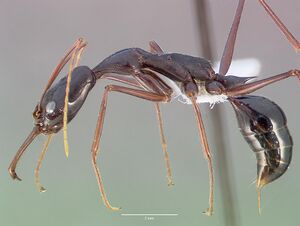 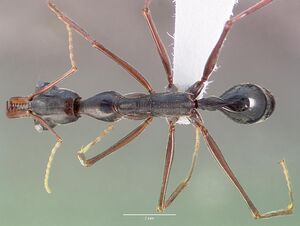 
| |
| Worker. Specimen code casent0005968. Photographer April Nobile, uploaded by California Academy of Sciences. | Owned by CAS, San Francisco, CA, USA. |
   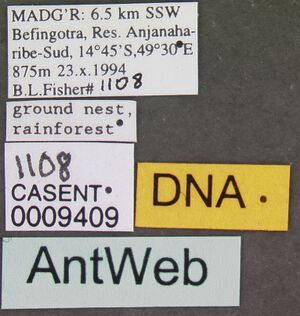
| |
| Worker. Specimen code casent0009409. Photographer April Nobile, uploaded by California Academy of Sciences. | Owned by CAS, San Francisco, CA, USA. |
   
| |
| Queen (ergatoid). Specimen code casent0076940. Photographer April Nobile, uploaded by California Academy of Sciences. | Owned by CAS, San Francisco, CA, USA. |
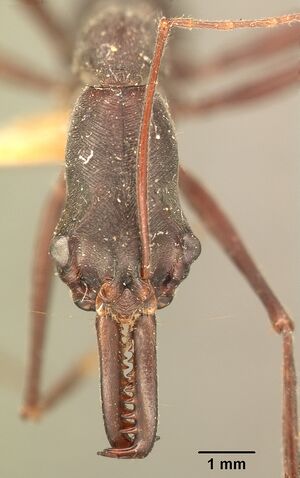   
| |
| Worker. Specimen code casent0101014. Photographer April Nobile, uploaded by California Academy of Sciences. | Owned by MHNG, Geneva, Switzerland. |
   
| |
| Worker. Specimen code casent0101015. Photographer April Nobile, uploaded by California Academy of Sciences. | Owned by MHNG, Geneva, Switzerland. |
   
| |
| Worker. Specimen code casent0101986. Photographer April Nobile, uploaded by California Academy of Sciences. | Owned by MHNG, Geneva, Switzerland. |
   
| |
| Worker. Specimen code casent0102019. Photographer April Nobile, uploaded by California Academy of Sciences. | Owned by MSNG, Genoa, Italy. |
  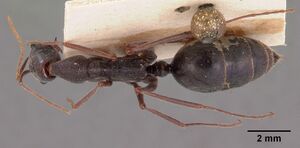 
| |
| Queen (ergatoid). Specimen code casent0102020. Photographer April Nobile, uploaded by California Academy of Sciences. | Owned by MSNG, Genoa, Italy. |
   
| |
| Lectotype of Odontomachus coquereli minor. Worker. Specimen code casent0102021. Photographer April Nobile, uploaded by California Academy of Sciences. | Owned by MSNG, Genoa, Italy. |
   
| |
| Lectotype of Odontomachus coquereli. Worker. Specimen code casent0104549. Photographer April Nobile, uploaded by California Academy of Sciences. | Owned by ZMHB, Berlin, Germany. |
   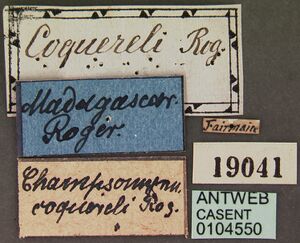
| |
| Worker. Specimen code casent0104550. Photographer April Nobile, uploaded by California Academy of Sciences. | Owned by ZMHB, Berlin, Germany. |
   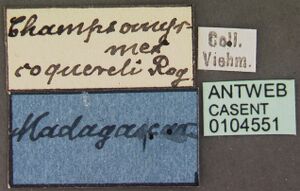
| |
| Worker. Specimen code casent0104551. Photographer April Nobile, uploaded by California Academy of Sciences. | Owned by ZMHB, Berlin, Germany. |
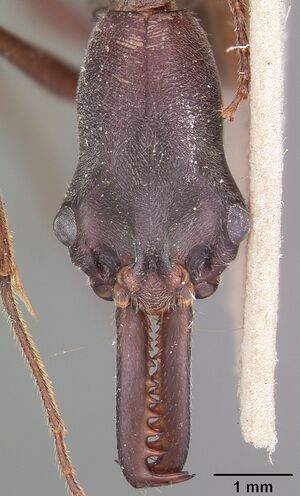   
| |
| Worker. Specimen code casent0104552. Photographer April Nobile, uploaded by California Academy of Sciences. | Owned by ZMHB, Berlin, Germany. |
 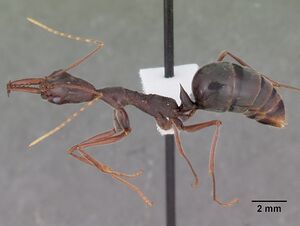  
| |
| Queen (ergatoid). Specimen code casent0104947. Photographer April Nobile, uploaded by California Academy of Sciences. | Owned by CAS, San Francisco, CA, USA. |
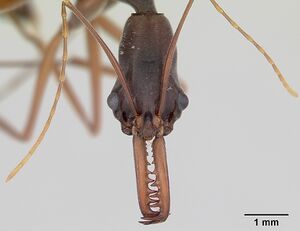   
| |
| Worker. Specimen code casent0499525. Photographer April Nobile, uploaded by California Academy of Sciences. | Owned by CAS, San Francisco, CA, USA. |
Male
Images from AntWeb
  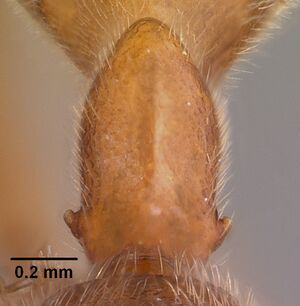    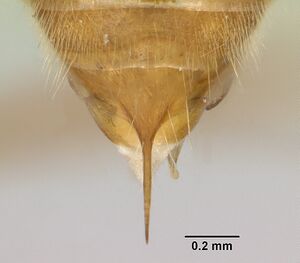 
| |
| Male (alate). Specimen code casent0049797. Photographer April Nobile, uploaded by California Academy of Sciences. | Owned by CAS, San Francisco, CA, USA. |
  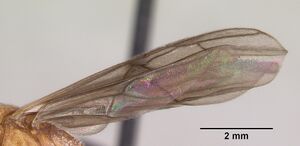   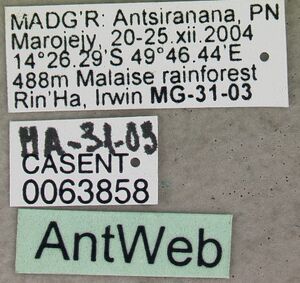
| |
| Male (alate). Specimen code casent0063858. Photographer April Nobile, uploaded by California Academy of Sciences. | Owned by CAS, San Francisco, CA, USA. |
Nomenclature
The following information is derived from Barry Bolton's Online Catalogue of the Ants of the World.
- coquereli. Odontomachus coquereli Roger, 1861a: 30 (w.) MADAGASCAR.
- Type-material: lectotype worker (by designation of Fisher & Smith, 2008: 14).
- Type-locality: Madagascar: (no further data) (Coquerel).
- Type-depository: MNHU.
- Fisher & Smith, 2008: 14 (q.m.).
- Combination in Stenomyrmex: Mayr, 1865: 63 (footnote);
- combination in Champsomyrmex: Emery, 1892d: 558;
- combination in Odontomachus: Brown, 1976a: 103.
- Status as species: Roger, 1863b: 21; Mayr, 1863: 436; Forel, 1891b: 105 (redescription); Dalla Torre, 1893: 49; Wasmann, 1897: 250; Emery, 1911d: 111; Wheeler, W.M. 1922a: 1013; Brown, 1976a: 103, 143; Bolton, 1995b: 295; Fisher & Smith, 2008: 14 (redescription).
- Senior synonym of minor: Brown, 1976a: 103; Bolton, 1995b: 295; Fisher & Smith, 2008: 14.
- Distribution: Madagascar.
- minor. Champsomyrmex coquereli var. minor Emery, 1899f: 273 (w.q.) MADAGASCAR.
- Type-material: lectotype worker (by designation of Fisher & Smith, 2008: 14).
- Type-locality: Madagascar: Baie d’Antongil (A. Mocquerys).
- Type-depository: MSNG.
- Subspecies of coquereli: Forel, 1907g: 75; Emery, 1911d: 111; Wheeler, W.M. 1922a: 1013.
- Junior synonym of coquereli: Brown, 1976a: 103; Bolton, 1995b: 296; Fisher & Smith, 2008: 14.
Unless otherwise noted the text for the remainder of this section is reported from the publication that includes the original description.
Description
Worker
Fisher and Smith (2008) - Measurements: maximum and minimum based on n = 45 from Madagascar: HL 2.69–3.27, HW (across vertex) 1.26–1.77, HW (across upper eye margin) 1.54–2.02, CI 57–67, EL 0.46–0.55, ML 1.76–2.16, MI 61–68, SL 3.04–3.96, SI 164–207, WL 4.18–5.11. FL 3.32–4.68, PW 1.11–1.53.
Workers of this species can be easily distinguished from troglodytes by their larger size, mandible with long, acute apical and preapical teeth and lack of extraocular furrows and temporal ridges on vertex.
There is notable geographic variation in shape of petiole, sculpture and number of preapical teeth. Preapical teeth and denticles range from 7–12. Occasionally, adjacent teeth may be fused at base to form a single bidententate tooth. However, there is no consistent concordant pattern to this variation.
Queen
Fisher and Smith (2008) - Measurements: maximum and minimum based on n = 5 from Madagascar: HL 2.81–2.94, HW (across vertex) 1.39–1.55, HW (across upper eye margin) 1.83–1.98, CI 62–71, EL 0.45–0.55, ML 1.66–1.81, MI 59–62, SL 3.07–3.29, SI 155–179, WL 4.35–4.56, FL 3.60–3.84, PW 1.28–1.43. Preapical teeth count 7–10.
Male
Fisher and Smith (2008) - Measurements: maximum and minimum based on n = 5 from Madagascar: HL 1.11–1.22, HW 1.41–1.57, CI 128–134, EL 0.78–0.90, SL 0.30–0.38, SI 21–23, WL 3.38–3.85, FL 2.90–3.16.
Type Material
Fisher and Smith (2008):
Lectotype: worker, Madagascar (Coquerel) (Berlin Museum für Naturkunde der Humboldt-Universität), present designation [examined] AntWeb CASENT0104549.
Odontomachus coquereli minor. Lectotype; worker, Madagascar, Baie d' Antongil (Mocquerys) (Museo Civico di Storia Naturale, Genoa), present designation [examined] AntWeb CASENT0102021.
References
- Boudinot, B.E., Richter, A.K., Hammel, J.U., Szwedo, J., Bojarski, B., Perrichot, V. 2022. Genomic-phenomic reciprocal illumination: Desyopone hereon gen. et sp. nov., an exceptional Aneuretine-like fossil ant from Ethiopian amber (Hymenoptera: Formicidae: Ponerinae). Insects 13(9), 796 (doi:10.3390/insects13090796).
- Brown, W. L., Jr. 1976c. Contributions toward a reclassification of the Formicidae. Part VI. Ponerinae, tribe Ponerini, subtribe Odontomachiti. Section A. Introduction, subtribal characters. Genus Odontomachus. Stud. Entomol. 19: 67-171 (page 103, Senior synonym of minor; page 143, see also)
- Emery, C. 1892f [1891]. Voyage de M. Ch. Alluaud dans le territoire d'Assinie (Afrique occidentale) en juillet et août 1886. Formicides. Ann. Soc. Entomol. Fr. 60: 553-574 (page 558, Combination in Champsomyrmex)
- Fisher, B. L. and M. A. Smith. 2008. A Revision of Malagasy Species of Anochetus Mayr and Odontomachus Latreille (Hymenoptera: Formicidae). PloS one. 3:e1787.
- Forel, A. 1891c. Les Formicides. [part]. In: Grandidier, A. Histoire physique, naturelle, et politique de Madagascar. Volume XX. Histoire naturelle des Hyménoptères. Deuxième partie (28e fascicule). Paris: Hachette et Cie, v + 237 pp. (page 105, see also)
- Molet, M., C. Peeters and B.L. Fisher. 2007. Permanent loss of wings in queens of the ant Odontomachus coquereli from Madagascar. Insectes Sociaux 54:183-188
- Roger, J. 1861a. Die Ponera-artigen Ameisen (Schluss). Berl. Entomol. Z. 5: 1-54 (page 30, worker described)
- Satria, R. 2017. Taxonomy of the ant genus Odontomachus (Hymenoptera: Formicidae: Ponerinae) in the Indo-Chinese and Indo-Malayan subregions. Ph.D. thesis, Tokyo Metropolitan University.
- Subedi, I.P., Budha, P.B., Bharti, H., Alonso, L., Yamane, S. 2023. Ponerine ants of Nepal (Hymenoptera: Formicidae, Ponerinae): a generic synopsis, new faunal records, and rediscovery of a rare ant, Emeryopone franzi (Baroni Urbani 1975). (doi:10.20362/am.016003).
References based on Global Ant Biodiversity Informatics
- Brown W. L., Jr. 1976. Contributions toward a reclassification of the Formicidae. Part VI. Ponerinae, tribe Ponerini, subtribe Odontomachiti. Section A. Introduction, subtribal characters. Genus Odontomachus. Stud. Entomol. 19: 67-171.
- Emery C. 1899. Formiche di Madagascar raccolte dal Sig. A. Mocquerys nei pressi della Baia di Antongil (1897-1898). Bullettino della Società Entomologica Italiana 31: 263-290.
- Fisher B. L. 1996. Ant diversity patterns along an elevational gradient in the Réserve Naturelle Intégrale d'Andringitra, Madagascar. Fieldiana Zoology (n.s.)85: 93-108
- Fisher B. L. 1997. Biogeography and ecology of the ant fauna of Madagascar (Hymenoptera: Formicidae). Journal of Natural History 31: 269-302.
- Fisher B. L. 1998. Ant diversity patterns along an elevational gradient in the Réserve Spéciale d'Anjanaharibe-Sud and on the western Masoala Peninsula, Madagascar. Fieldiana Zoology (n.s.)90: 39-67.
- Fisher B. L. 2003. Formicidae, ants. Pp. 811-819 in: Goodman, S. M.; Benstead, J. P. (eds.) 2003. The natural history of Madagascar. Chicago: University of Chicago Press, xxi + 1709 pp.
- Fisher B. L., and M. A. Smith. 2008. A revision of Malagasy species of Anochetus Mayr and Odontomachus Latreille (Hymenoptera: Formicidae). PLoS ONE 3(5): e1787. doi:10.1371/journal.pone.0001787
- Forel A. 1897. Ameisen aus Nossi-Bé, Majunga, Juan de Nova (Madagaskar), den Aldabra-Inseln und Sansibar, gesammelt von Herrn Dr. A. Voeltzkow aus Berlin. Mit einem Anhang über die von Herrn Privatdocenten Dr. A. Brauer in Marburg auf den Seychellen und von Herrn Perrot auf Ste. Marie (Madagaskar) gesammelten Ameisen. Abhandlungen der Senckenbergischen Naturforschenden Gesellschaft 21: 185-208.
- Molet, M., C. Peeters and B.L. Fisher. 2007. Permanent loss of wings in queens of the ant Odontomachus coquereli from Madagascar. Insectes Sociaux 54:183-188
- Wheeler W. M. 1922. Ants of the American Museum Congo expedition. A contribution to the myrmecology of Africa. IX. A synonymic list of the ants of the Malagasy region. Bulletin of the American Museum of Natural History 45: 1005-1055

